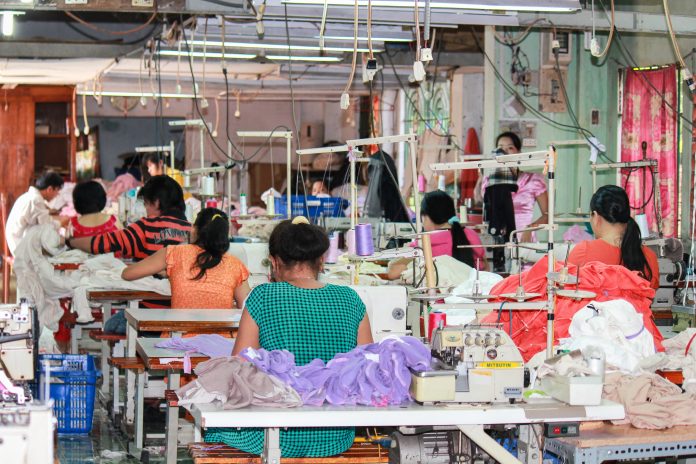There is no doubt that the COVID-19 pandemic has largely affected the fashion industry from the people it employs to the waste it has created, however, this crisis could present an opportunity to rethink the industry
The fashion industry has been negatively affected by the COVID-19 outbreak on every level from retailers to supply chains to vendors. We have seen a number of retailers close, production has ceased and demand has plummeted.
With large corporations trying to save their profits, some workers have been exploited for this reason.
High-street stores have been massively affected by store closures, H&M has recently announced it will be closing around 70% of its stores worldwide. However online fast fashion brands have not felt the sting, in fact, things are quite the opposite.
Already criticised for their unsustainable approaches, fast fashion online retailers have now been accused of using sales as a tactic to lure in more customers during lockdown. Many brands websites show sales with up to 70% off items. As they are based online, they cannot come under fire for keeping their stores open, but this does not mean their workers aren’t still working in warehouses and many issues have been raised with this.
Terrified ASOS workers said they felt ‘like rats’ in a warehouse they have branded a ‘cradle of disease’ in a recent survey by the GMB Union. The survey carried out by GMB showed that 98% of the 4,000 Grimethorpe ASOS workers felt unsafe at work. In reality, where other retailers have shut down business to keep their workers safe, ASOS has reportedly ramped up their operations in Barnsley.
ASOS is not the only brand in the fashion industry accused of not following safety procedures during the COVID-19 pandemic. An employee at Boohoo said people are working so closely together and they are “breathing in each other’s faces” due to the lack of space. The worker added: “There’s 1000 plus staff, if one person gets it there, then we all will. They think we are essential and that people need clothes, but that’s not the case. They keep putting sales on to boost their sales. That’s not looking out for people that’s just rubbing salt into the wound”.
The fashion industry in Bangladesh
Bangladesh is the world’s second-largest apparel exporter of western fast fashion brands, so unsurprisingly the country has been heavily impacted. A report by Bloomberg found that an estimated 1,089 garment factories in Bangladesh have had orders cancelled due to the COVID-19 outbreak, costing roughly $1.5 bn.
Some factories in Bangladesh have been shut down indefinitely. A few workers were given less than a month’s salary as compensation but many others received nothing at all.
Thousands of garment workers have recently returned to work across Bangladesh amid the nationwide COVID-19 shutdown as factories begin to reopen to resume production. However, this has gone against advice from the Ministry of Health, raising concerns over the risk of infection to both workers and communities.
In a time of fear and uncertainty, many brands in the fashion industry and elsewhere have shown support and offered help to those worst affected by the COVID-19 pandemic. One NGO working in Bangladesh to protect garment workers is the Awaj Foundation, who continue to fight for a living wage for some of the poorest women in the country. However, the emergency has highlighted that some companies are still putting profit over people. From a general lack of care for sustainability to disregarding the safety of their workers’ wellbeing, fast fashion is showing the negative side of the industry during this global pandemic.
A chance for change?
This unique set of circumstances can hopefully bring about a positive change in the fashion industry that has been needed for years. The fashion industry makes up 10% of humanity’s carbon emissions as well as dries up water sources and pollutes rivers and streams.
Given the level of overproduction the fashion industry was providing before the COVID-19 pandemic, it can be hoped that the time we have spent indoors will make us more conscious of its harmful impacts. Hopefully, it can lead us to reusing and mending our clothes as well as adopting a mindset of longevity when it comes to our wardrobes.
With stores closing, there is a lot of existing stock of clothing left building up in stores and warehouses. This poses the question: what can be done with this leftover stock? It could actually present an incredible opportunity to consider how the industry can be reset and how the fashion industry can invest in recycling and upcycling post-COVID-19.
Vogue editor, Dame Anna Wintour, recently explained: “I think it’s an opportunity for all of us to look at our industry and to look at our lives, and to rethink our values, and to really think about the waste, and the amount of money, and consumption, and excess that we have all indulged in and how we really need to rethink what this industry stands for.”











